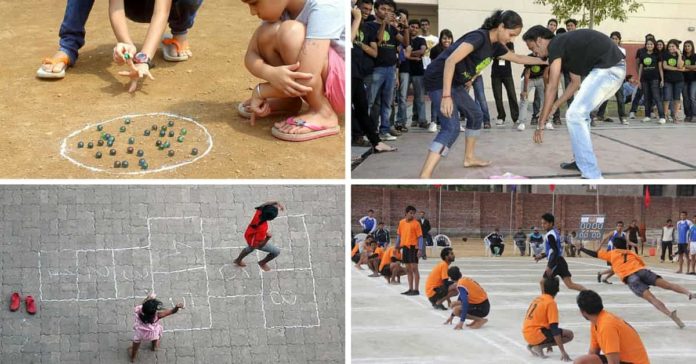
Lagori, Kancha, Gilli-danda, Kho Kho – remember any of these names from your childhood? If you’re in your 40s or 50s, the mere mention is bound to arouse nostalgia in summer days spent playing outdoors with your friends. If you’re in your 20s or 30s, your parents and grandparents could tell you a tale or two about the magic of these childhood games.
But will the children of this generation have the same memories? probably not, because many of them spend their time playing video games on mobile. This obsession has brought the traditional Indian games to the edge of extinction.
Here is a list of such forgotten games you may want to try playing with your friends or children:
1. Lagori or Pithu
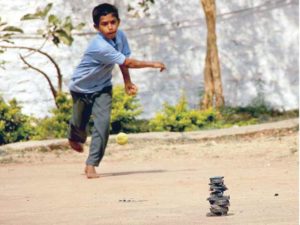
A very common game among kids in India at one time. It includes a ball and a pile of flat stones which are piled on top of each other. One member of a team throws the ball at the stack with the target to knock down the stones piled over. The team then tries to restore the pile of stones while the opposing team ( known as the hitters) throws the ball at them. If the ball touches a person, he is out and his team continues without him.
Played by: two teams, any number of members.
2. Kancha or Marbles
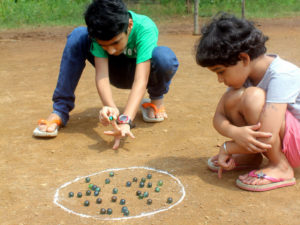
This is still a popular game among kids in some part of rural areas. The game is played with round glass marbles and the goal is to collect as many marbles as possible by shooting and striking other marbles with the ones you have.
Played by: any number of people.
3. Chain

The chain is another classic children’s game, although it is losing popularity now. The game consists of a ‘denner’, whose aim is to catch the other players. Once the denner catches a player, the player becomes part of a chain(which is formed by holding hands) and then has to help the denner in catching the remaining players.
Played by: any number of people, usually not more than 10.
4. Gilli Danda
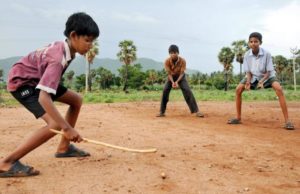
Gilli Danda is a game very similar to cricket and baseball; its prevalence in India once rivalled that of cricket. The game is played with a small piece of wood reduced on both sides known as Gilli and a large piece of wood that is used to hit the Gilli known as danda. The aim of the game is to hit the Gilli as far as possible.
Played by: two teams, any number of players
5. Kho Kho
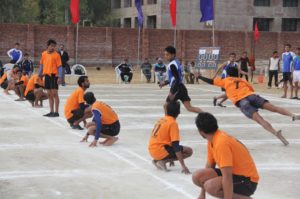
The game has of two teams, who are asked to chase down and tag the players of the opposite team to win the game. The chasing team sends out nine players onto the field, who sit in a straight line with alternate players facing opposite sides. The chasers have to make sure they catch the runners (who enter the field one at a time) before time runs out.
Played by: two teams of nine players each
6. Lattoo
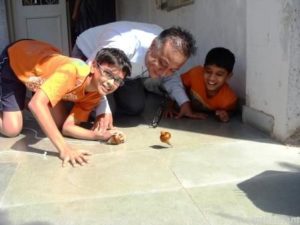
Lattoo is a game that involves spinning a wooden top (tattoo), which has grooves in its lower half and a nail at the bottom, on which it spins. A thick string is wrapped around the grooves on the lower half and pulling the string makes the topspin.
Played by: one or more people
7. Hopscotch or Stapoo
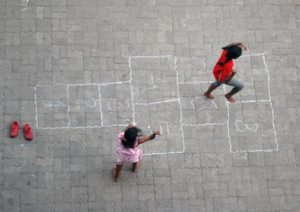
Hopscotch is a popular playground game in which players throw a small object into numbered spaces of a pattern of rectangles marked on the ground and then hop or jump through the spaces on one or two legs to retrieve the object.
Played by: one or more people
8. Chhupam Chhupai or Hide-n-Seek

Hide and Seek is a popular children’s game in which players hide themselves in a marked area, to be found by one or more seekers/denners. The denner closes his eyes and counts till a certain number, after which he tries to find the hidden players.
Played by: any number of people
9. Chor-Sipahi
The game is the Indian equivalent of the western game “Tag.” There are two teams in the game – one team of thieves (chor) and the other team of sipahi (police). The sipahi try and catch the chor, after which the turn changes (that is, the chorbecome the sipahi and vice versa)
Played by: two teams, any number of people
10. Four Corners
Four corners is a game often played by primary school children. Four corners are designated, and a player is chosen as being “it”. The remaining players have to swap corners without being caught by “it”. If a player is caught by “it” or is without a free corner to stand in, he becomes “it”.
Played by: 5 people
11. Kabaddi
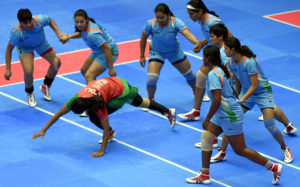
Kabaddi is an Indian origin game that was on its way to extinction but is now regaining its popularity. There are several forms of the game, but most involve two teams of seven players each, who have a designated area of their own. Players have to raid the other team’s area and try and touch one of their players, hence making the touched player “out.”
Played by: two teams of 7 members each
12. Dog and the Bone
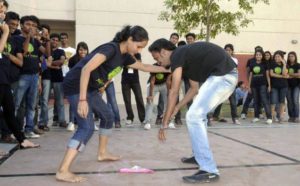
The game consists of two teams, and an object such as a bottle or handkerchief, etc., which is designated as the “bone.” A player from each team comes forward and attempts to take the bone (placed at the centre of the playing area) back to his team. The player who fails to take the bone has to go out of the game.
Played by: two teams of usually 5-10 members each
13. Maram Pitthi
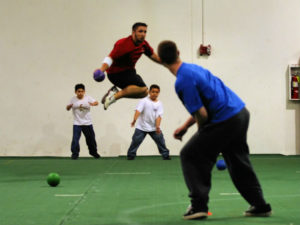
A game is very similar to dodgeball. It consists of two teams, who scatter around in a large area. Players from a team try to hit players of the opposing team with a ball (usually made of sponge). Once a player is hit, he is out of the game. Passing between players of the same team is also allowed.
Played by: two teams, any number of members
14. Vish Amrit
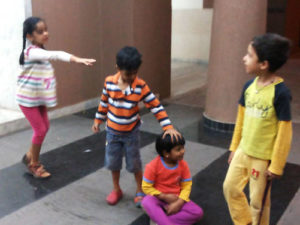
It is the Indian version of the game “lock and key”. The aim of the dinner is to touch the other players, giving them Vish. As soon as Vish is given the person stays there until teammates come to give him/her Amrit. The game ends when all players have been caught and there is no one left to give Amrit.
Played by: any number of players
15. Langdi
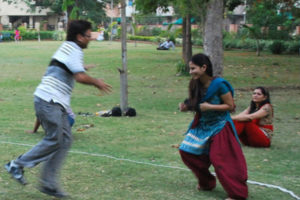
Langdi is a beloved childhood game, particularly in the state of Maharashtra. The game has two teams, and the team that wins the toss defends first. The opposing team sends a player to tag as many defenders as he can, while jumping on one foot. The team that tags the most defenders wins.
Played by: two teams, 12 players each
